Primary tabs
Faculty Mentors
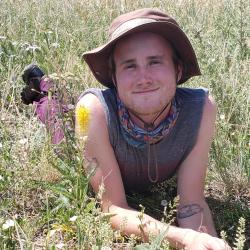
Sam Ahler
My name is Sam Ahler, I use they/them pronouns right now, and I was born in what is now Wisconsin—the traditional territories of the Ho-Chunk, Menominee, Potawatomi, Dakota, and Ojibwe Nations. I am of English and German descent and my family immigrated to North America in the 1720s. I have Bachelor’s Degrees from the University of Wisconsin – Madison in Conservation Biology and Environmental Studies, with a minor in LGBTQ+ Studies. I worked in oak savannas, tallgrass prairies with Dr. Ellen Damschen.
As a PhD student in the Ecology and Evolutionary Biology Department at the University of Colorado – Boulder, I work with Katharine Suding and Nancy Shackelford in the mixed grass prairies along the Front Range of Colorado. I now live and work in the traditional territories of the Cheyenne, Arapaho, Ute, Apache, Comanche, Kiowa, Lakota, Pueblo and Shoshone Nations. In collaboration with the Denver Botanic Gardens at Chatfield Farms, I study the impact of small-scale environmental conditions on grass establishment, growth, and survival. In addition, I study vegetative—or clonal—methods of reproduction in grasses to better understand individual and population persistence and the mechanisms linking population-level dynamics to ecosystem-level processes.
Emily Beam
Emily Golden Beam is a PhD candidate working with Dr. Joanna Lambert. She focuses on how to study predator behavior in the Anthropocene both non-invasively and in ways that honor all stakeholders. Her work primarily takes place in the American West. Website: http://emilygoldenbeam.com/
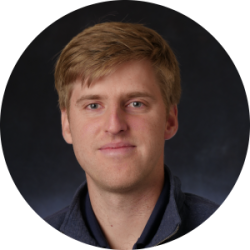
Matthew Burgess
I am an Assistant Professor in Environmental Studies and the Director of the Center for Social and Environmental Futures in CIRES, with a courtesy appointment in Economics. My research focuses on economic growth futures and their impacts on the environment and society, mathematical modeling of human-environment systems, and political polarization of environmental issues. I use a combination of mathematical and computer modeling, data synthesis, and collaboration with stakeholders, in order to make conceptual advances and link them to practice.
- Jessica DeGroot ( RECCS cohort 2022 )
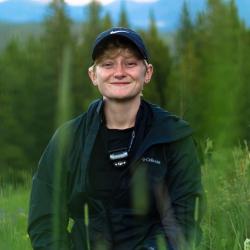
Casey Carroll
I am interested in climate change, plant-pollinator interactions, conservation, and large-scale habitat disturbance. I am particularly interested in the effects of warm temperatures on the temporal synchronicity of plant and pollinator interactions. My current project looks at the effects of increased nest temperatures on cavity-dwelling bees across an elevation gradient. This summer I will be leading fieldwork in the Front Range of the Rocky Mountains. My fieldwork will include placing bee nests and conducting flower surveys. This will help me monitor the physical effects of increasing temperatures on the bees and allow me to build a plant-pollinator network for each site.
My master’s work at the University of Florida focused on plant diversity within urban lawns. The goal of this research was to identify plant community characteristics within lawns that promote diverse and abundant arthropod communities. Ultimately, the research strove to promote more sustainable urban landscape practices.
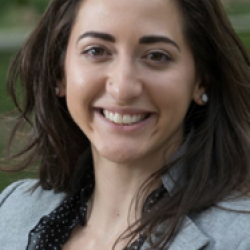
Ashley Dancer
I am an Air Force Veteran and current PhD student at CU Boulder in the Environmental Studies Department. I’m also on Denver’s Sustainability Advisory Board, Science and Research Committee. My research interests vary, but I’m currently focused on exploring possible economic and population growth futures and what these futures could mean for society, the environment, and geopolitics. I’m also interested in researching effective strategies for creating favorable environmental policy outcomes. I have experience in different qualitative social science methods and will be expanding my methodological skills to focus more on quantitative research methods and dynamic systems modeling.
I have a B.S. in meteorology, MBA in Sustainable Real Estate Development, and M.S. in Environmental Studies. The research that contributed to my Master’s thesis won a Food Studies International Award for Excellence in 2018. I was also awarded a 2021 Graduate School Diversity Recruitment Fellowship.
I currently live in Broomfield with my long-time partner, who is an electrical engineer. In my free-time, I enjoy practicing jujitsu, watching stand-up comedy, attending themed events (costumes required), listening to podcasts, and hitting the gym.
- Jessica DeGroot ( RECCS cohort 2022 )
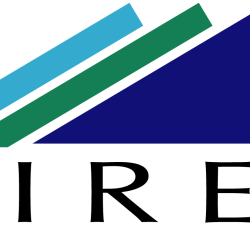
Melisa Diaz
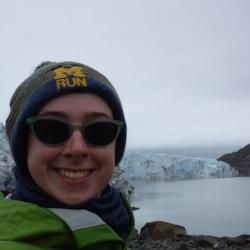
Ash Gilbert
Ash is a PhD student working with Dr. Jen Kay in the Atmospheric & Oceanic Sciences department at the University of Colorado-Boulder. Their research interests include modeling the radiation from supercooled liquid in the Arctic and polar cloud processes more generally. Before coming to Boulder, Ash completed their bachelor's in Climate & Meteorology with minors in Computer Science & Latin at the University of Michigan.

Toby Halamka
Toby Ann Halamka (she/her) is a PhD student in the Department of Geological Sciences working in the Organic Geochemistry and Geomicrobial Physiology and Evolution lab. Her research focuses on determining the source organisms for the orphaned lipids brGDGTs. Toby’s work centers on connecting the physiological roles of tetraether lipids in soil bacteria with the genetic basis for biosynthesizing brGDGTs. Her work is motivated by the need to further the organic geochemistry community’s understanding of the environmental distribution of bacterial tetraether lipids and their utility in paleoenvironmental reconstructions. Toby is also passionate about increasing the visibility and support of LGBTQ+ geoscientists and encourages anybody that is interested in this mission to join her organization Geo+.
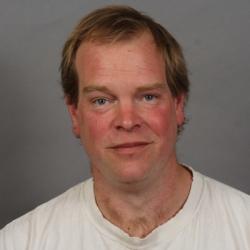
Edward Hartnett
I am the author of NetCDF-4, a freely available software library for scientific data, used by NASA, NOAA, the ESA, and climate and meteorology scientists around the world.
I am currently working on improving parallel IO performance for the scientific modeling community with the Parallel IO library, a C/Fortran library that runs on supercomputers, as part of weather and climate models.
I have also supervised several excellent software engineering teams, including the Production Software Team as part of Ground Data Systems for several NASA missions, including Messenger, Cassini, MAVEN, MMS, SORCE, AIM, and TSIS.
https://gsl.noaa.gov/profiles/Edward.Hartnett
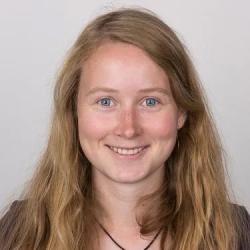
Ulla Heede
Dr. Ulla Heede joined the Oceans and Climate Lab in Fall 2022 as a CIRES Postdoctoral Fellow. She completed her Ph.D. in Earth & Planetary Sciences at Yale; her research is on tropical climate dynamics, especially toward understanding how the tropical Pacific coupled ocean-atmosphere system responds to anthropogenic radiative forcing. Ulla completed her undergraduate education at the University of Cambridge (UK). As a graduate student at Yale, her research combining satellites and climate models was recognized by NASA through the Future Investigators in NASA Earth and Space Science and Technology (FINESST) fellowship. While at CU, Ulla plans to isolate the climate impacts associated with an enhanced eastern Pacific warming using state-of-the-art global climate models. An overarching goal of her work is to build bridges between large-scale climate dynamics and societal and policy relevant information on climate impacts. In addition, she is part of a project lead by Prof. Aneesh Subramanian working on understanding tropical air-sea interactions using high-resolution models and machine learning.

Margaret Hegwood
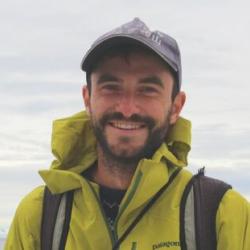
Jonathan Henn
I am a Postdoctoral Researcher working with Marko Spasojevic and Katie Suding to characterize long-term change in alpine plant communities. Previously, I was a Postdoc with Anne Bjorkman at the University of Gothenburg on arctic plant responses and adaptation to climate change. I completed my PhD at the University of Wisconsin-Madison in the Damschen Lab. I studied how functional traits can help explain plant responses to factors like climate change, species invasions, and changing disturbance regimes. Overall, my research focuses on these issues to improve the restoration and management of ecosystems under rapidly changing conditions. In addition to doing research, I actively work on developing effective mentoring, teaching, and outreach skills because I believe that scientists need to be effective mentors, teachers, and communicators to help cultivate the next generation of scientists and engaged citizens.
- Alexandra Emond ( RECCS cohort 2022 )
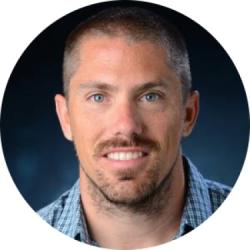
Kris Karnauskas
Kris Karnauskas is a Fellow of the Cooperative Institute for Research in Environmental Sciences (CIRES) and an Associate Professor in the Department of Atmospheric and Oceanic Sciences (ATOC) at the University of Colorado Boulder, with secondary faculty appointments in the CU School of Medicine and the Colorado School of Public Health. Prior to joining the CU Boulder faculty, Kris spent six years on the faculty of the Woods Hole Oceanographic Institution (WHOI) and the MIT-WHOI Joint Program in Oceanography (also teaching at Boston College) followed by sabbatical at the Institut Pierre Simon Laplace (IPSL) in Paris, France through a Research Fellowship from the Alfred P. Sloan Foundation. Kris completed his B.S. at the University of Wisconsin-Madison and Ph.D. at the University of Maryland-College Park, both in Atmospheric and Oceanic Sciences, followed by a postdoctoral fellowship in Ocean and Climate Physics at the Lamont-Doherty Earth Observatory of Columbia University. Kris currently serves as Editor for AGU's Geophysical Research Letters and Section Editor for PLOS Climate, and recently served on the Scientific Steering Committee (SSC) of the U.S. Climate Variability and Predictability Program (US CLIVAR). Kris was the recipient of the 2017 Ocean Sciences Early Career Award from the American Geophysical Union (AGU) ""for important contributions to better understanding the tropical oceans and atmosphere."" During the spring of 2022, Kris was on sabbatical at Harvard University's Center for the Environment.
https://www.colorado.edu/oclab/kris-karnauskas
Jen Kay
Jen Kay is an associate professor in the Department of Atmospheric and Oceanic Sciences and a CIRES Associate Director and Fellow at the University of Colorado Boulder. Dr. Kay researches climate change, feedbacks, and variability, with a specific focus on connecting global coupled climate modeling with observed cloud, precipitation, and sea ice processes.
- Jason Chalmers ( RECCS cohort 2018 )
- Susannah Rozak ( RECCS cohort 2018 )
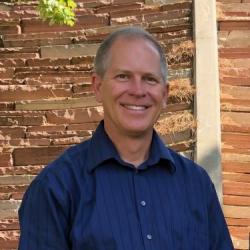
John Keller
Dr. John Keller is the Director of Fiske Planetarium and a Teaching Professor of Distinction within the Astrophysical and Planetary Sciences Department at the University of Colorado Boulder. Keller is a planetary scientist with research interests in occultations, astronomy education, and teacher preparation. He is PI and Co-PI for multiple NASA and NSF funded projects through which Fiske produces immersive full dome films that are shared with the planetarium community worldwide free of charge. He also helped establish and run the Research and Education Collaborative Occultation Network (RECON), an NSF-funded citizen science effort involving over 40 high schools across the western US to measure objects out beyond Neptune using stellar occultations, and he has contributed to international occultation campaigns on three continents for the NASA New Horizons and NASA Lucy missions. Keller is also a Professor Emeritus from California Polytechnic State University in San Luis Obispo, where he directed the Center for Engineering, Science, and Mathematics Education (CESAME) and ran the STEM Teacher and Researcher (STAR) Program, which provides paid summer research experiences at national labs for aspiring science and math teachers. Keller was also PI for three awards from the NSF Robert Noyce Teacher Scholarship Program.
After obtaining a BS in Biology and an MA in Education from Stanford University, Dr. Keller taught high school science in the Bay Area for five years. He completed an MS in Astrophysics from the University of Colorado and his PhD in Planetary Science at the University of Arizona where he worked for the 2001 Mars Odyssey mission. His dissertation also involved the development of a concept inventory instrument to uncover student misconceptions regarding the greenhouse effect.
https://www.colorado.edu/fiske/dr-john-keller
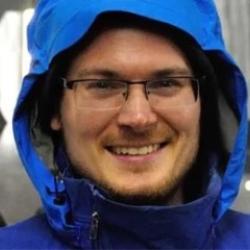
Sebastian Kopf
Sebastian Kopf. Assistant Professor, Department of Geological Sciences
His research and teaching interests combine various aspects of the geological and biological sciences with the goal of understanding how microbial life has shaped the Earth’s surface chemistry in the past and how it continues to do so today. His research's current focus is primarily aimed at understanding (and reconstituting) environmentally relevant growth conditions and uncovering the physiological basis and environmental production of biological signatures (isotopic, molecular and mineralogical).
- Adeena Chughtai ( RECCS cohort 2022 )
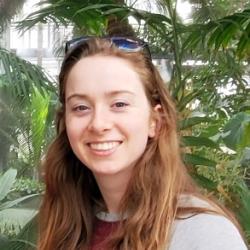
Regina Leuty
Regina is interested in the fields of wildlife management and conservation biology. She is working with the Lambert lab, focusing on biological and observational data collection to aid in the further study of coyote populations within the Denver metro area.
- Victoria Macias ( RECCS cohort 2022 )

AJ Krieger Lodge

Emmy Longnecker
Emmy received a BA in Chemistry from Smith College in 2020 and is currently an Atmospheric Chemistry PhD candidate working in Paul Ziemann's lab. Her work has included kinetic modeling, studies of indoor surface films, and fundamental mechanistic studies of atmospheric systems. When she isn't doing chemistry puzzles in lab, she plays the violin in a band, cooks with friends, and spends as much time as possible in the mountains.
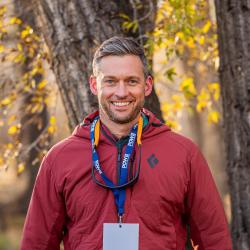
Keith Musselman
I’m excited about empirically based, theoretically grounded, and societally attuned science! My research goals are to assess climate change impacts on water availability, to measure and model ecohydrologic cold region processes across scales, and to develop approaches in collaboration with diverse stakeholder groups to inform sustainable adaptation and decision strategies.
I am committed to building a diverse research community, where everyone feels they belong, and we collectively benefit from our differences. I am motivated by the excitement of scientific discovery and the thrill of collaborative research. Efforts to be more inclusive will improve our knowledge and better serve the decisions of individuals and organizations. I believe these efforts can foster better outcomes for society and our environment.
https://www.colorado.edu/instaar/keith-musselman

Briana Prado
Briana Prado is a graduate student in the Geography department working under Dr. Melisa Diaz on chemical weathering of Antarctic soils. This summer Briana and RECCS mentee Izze will be conducting grain size analysis of McMurdo Dry Valley soils to understand the chemical composition and weathering processes of the soils. Briana and Izze will then develop skills in XRD preparation and analysis and work on identifying composition of samples.
Briana is from San Diego, CA and completed her undergrad at UC Santa Cruz double majoring in Earth Science and Chemistry. She is generally interested in biogeochemical cycles with an emphasis on the geochemical aspect of those processes. Briana enjoys going to concerts, playing ukulele and biking around Boulder and looks forward to building community at CIRES this summer.
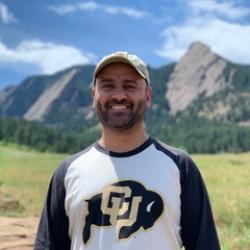
Julian Resasco
Julian Resasco
Assistant Professor EBIO University of Colorado, Boulder.
The unifying theme of our lab’s research is to understand how human stressors to the environment affect biodiversity and how to mitigate those impacts. These stressors include changes to landscapes, climate change, and species introductions. We often study spatial and temporal dynamics and use field studies at large spatial and long temporal scales to test theory and link ecological patterns with processes. Areas of research include landscape connectivity/corridors, habitat fragmentation, plant-pollinator networks, insect community ecology, stable isotope ecology, and conservation biology. We work on a variety of taxa but have a particular fondness for insects. Settings for our fieldwork include the longleaf pine ecosystem of the southeastern US and forests and meadows of the Rocky Mountains.
lab website: https://www.colorado.edu/lab/resasco/

Monica Sheffer
I use interdisciplinary approaches to answer questions about animals’ ecology, especially – but not exclusively – in the context of global climate change and adaptation to extreme and changing conditions. My work aims to integrate information from all levels of biological organization, from the molecular and physiological level, up to phenotypic outcomes for individuals, and how those outcomes shape population dynamics. As a postdoctoral researcher at the University of Washington in Seattle, I am studying how survival and fecundity constraints vary with elevation in a montane grasshopper system, along a transect in the Rocky Mountains.
My PhD work at the University of Greifswald in Germany integrated genomics, metabolomics, physiology and microbiology to investigate the success of the European wasp spider, Argiope bruennichi, in rapidly colonizing new habitats in northern Europe. I got my start in science as an undergraduate researcher in the UC Berkeley EvoLab, where I made use of next generation sequencing paired with field observations to describe and quantify the dynamics of dietary and spatial niche partitioning in three web-sharing Hawaiian spider genera: Orsonwelles, Argyrodes, and Ariamnes. I continue to collaborate with the Berkeley EvoLab on a project within the California Conservation Genomics Project, where we are studying landscape genetics and adaptation to the environment in two spider species, Tetragnatha versicolor and T. laboriosa.
Photo by Kathleen Sheffer Photography
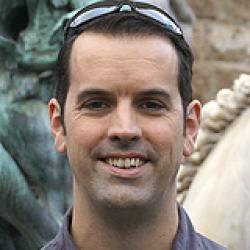
Marko Spasojevic
I am a plant community ecologist working at the interface of ecology, biogeography and conservation. My broad goal is to understand the mechanisms that influence patterns of biodiversity, and then to use that understanding to address environmental issues. My research combines large-scale observational studies across biogeographic regions, field experiments, functional and phylogenetic approaches, and advanced statistics and modeling to address environmental issues and to explore fundamental questions in ecology.
https://biology.ucr.edu/people/faculty/Spasojevic.html
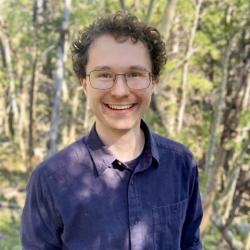
Nicolas Tarasewicz
My research interests center around understanding climate and anthropogenic impacts on ecosystem services through combining empirical measurements and modeling.
I’m working with Keith Musselman on the Front Range Ecosystem Resilience Project. The project collects and integrates data regarding socio-cultural values, ecosystem processes, and land management considerations to identify and project climate change refugia related to montane regions along urban-wildland interfaces. The project is funded by the National Science Foundation’s Growing Convergence Research program.
I’m from the San Juan Mountains in southwestern Colorado. I completed my undergraduate degree in Geography from the University of Denver, and my Master’s in Physical Geography and Ecosystem Science at Lund University, Sweden, in 2022. While there, I developed a novel composite indicator representing the impact of modeled forest management practices on ecosystem services. My hobbies include spending time outdoors, performance art, and playing board games with friends.
https://www.colorado.edu/instaar/nicolas-tarasewicz

Megan Thompson-Munson
Megan worked as an undergraduate research technician in Dr. Isla Castañeda's Biogeochemistry Lab where she used organic matter preserved in lake beds to reconstruct paleoclimate conditions in the East African Rift Valley during times of important hominin evolution. During her master's, Megan's focus shifted to glaciology and Greenland Ice Sheet dynamics. Working with Dr. Neil Humphrey, she used a full-depth array of englacial sensors to quantify ice deformation in three dimensions at a site along the western margin of the Greenland Ice Sheet.
Megan's PhD research will bridge the gap between her past experiences in climate and ice. She will be working on projects within the broad and interdisciplinary field of ice-ocean-climate interactions.
When she's not doing research, Megan enjoys hiking, camping, backpacking, and basket weaving. She is quite fond of national parks--especially Mount Rainier National Park where she worked as a park ranger in 2016 and saw her first glacier.
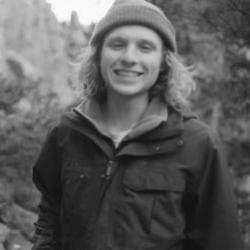
Samuel Yevak
Sammy has been working the Niwot Ridge LTER Limnology group since his sophomore year of
undergraduate at CU Boulder. Over the years Sammy has been involved in many Niwot Ridge
LTER projects such as the pika survey, alpine plant biomass survey, megacosm experiment,
black sand experiment, gas sampling, and NADP sampling. His main research is focused on
alpine lakes and streams and how these systems respond to a changing alpine environment.
In his free time, you can find Sammy rock climbing, surfing, enjoying live music, camping, and
hanging out with his dog.
- Kyle Greaves ( RECCS cohort 2021 )
- Brian Hertvik ( RECCS cohort 2022 )
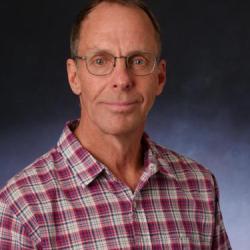
Paul Ziemann
The primary focus of our group's research is to elucidate mechanisms by which volatile organic compounds emitted from biogenic and anthropogenic sources react in the atmosphere to form products that can create submicron-size organic aerosol particles. These reactions are complex and include photochemistry, gas-phase oxidation, and heterogeneous/multiphase reactions. The resulting particles affect global climate, visibility, and human health. We conduct experiments in large-volume environmental chambers under simulated atmospheric conditions and then identify and quantify organic gas and aerosol reaction products using a variety of analytical instruments and methods. This information is used to develop detailed, quantitative chemical reaction mechanisms for predicting organic aerosol formation, which can be used to improve air quality and global climate models. We also conduct laboratory, field, and modeling studies of indoor air chemistry.
https://www.colorado.edu/chemistry/paul-ziemann
